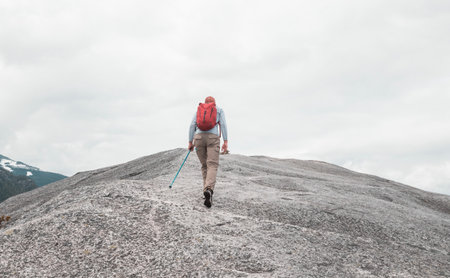1. Recognizing When You Need Help
When you’re out in remote areas, knowing when to ask for help can make all the difference. Sometimes, it’s easy to think you can handle a tough situation on your own, but recognizing the warning signs early is key to staying safe. Before you make any decisions, take a moment to assess what’s really going on.
Common Signs That Signal a Need for Rescue
| Sign | What It Looks Like | Why It Matters |
|---|---|---|
| Injury or Illness | Broken bones, severe bleeding, signs of shock, heat stroke, hypothermia, chest pain, or trouble breathing | Some injuries or illnesses can get worse fast without help |
| Lost or Disoriented | You don’t know where you are, have lost your trail, or can’t find your way back before dark | Getting more lost makes rescue harder and increases risk |
| Lack of Supplies | Running low or out of water, food, or essential gear; unable to stay warm or dry | Without basic needs, survival chances drop quickly |
| No Way to Communicate | No cell signal, dead phone battery, lost radio or satellite device | If you can’t call for help yourself, you’ll need to attract attention another way |
| Weather Danger | Rapidly changing weather—storms, heavy snow, rising floodwaters | Extreme weather can turn a minor problem into an emergency fast |
| Mental or Physical Exhaustion | You or someone in your group is too tired to continue safely (can’t walk out) | Pushing past exhaustion leads to accidents and mistakes |
Assessing Your Situation: Stop and Think Before Acting
If something feels off or you spot one of the warning signs above, stop right away. Here’s a simple checklist you can use:
- S – Stop: Don’t keep moving. Take a breath and calm down.
- T – Think: What happened? What do you really need?
- O – Observe: Check your surroundings—weather, supplies, injuries.
- P – Plan: Decide if you can solve the problem safely or if it’s time to signal for help.
Pro Tip:
If you’re not sure whether your situation is serious enough to call for help, remember: It’s always better to ask sooner rather than later. Search and rescue teams would rather respond to a false alarm than arrive too late.
Trust Your Gut!
Your instincts are powerful. If something feels wrong—don’t ignore it. Recognizing that you need help is the first step toward getting rescued.
2. Essential Gear for Emergency Communication
When you’re hiking, camping, or exploring remote areas in the U.S., having the right emergency communication gear can make all the difference if you need help. Let’s break down some must-have equipment that many American outdoor enthusiasts rely on to signal for help and get rescued.
Must-Have Emergency Communication Tools
| Device | How It Works | Best For | Common Brands/Examples |
|---|---|---|---|
| Personal Locator Beacons (PLBs) | Sends a distress signal with your GPS location to emergency services via satellite | Serious emergencies in areas without cell service | ACR ResQLink, Ocean Signal rescueME |
| Satellite Messengers | Allows two-way texting and SOS alerts using satellites; some models offer tracking and weather updates | Communication with family or rescuers outside cell range | Garmin inReach, SPOT X, ZOLEO Satellite Communicator |
| Whistles | Loud sound carries over long distances; three short blasts is the universal distress call in the U.S. | Quick attention from people nearby or search parties | Fox 40 Classic, Storm Safety Whistle |
| Signal Mirrors | Reflects sunlight to create a bright flash visible miles away during daylight hours | Attracting aircraft or distant searchers when visual contact is possible | SOL Rescue Flash Mirror, Coghlan’s Signal Mirror |
| Other Signaling Devices (Flares, Glow Sticks, etc.) | Create visible signals at night or in low-visibility conditions; single-use but highly noticeable | Nighttime signaling or foggy conditions; supplementing other methods | Sirius Signal Electronic Flare, Cyalume SnapLight Glow Sticks |
Why This Gear Matters in the U.S.
The vast backcountry and national parks across America often have spotty or zero cell phone coverage. Because of this, devices like PLBs and satellite messengers are strongly recommended by organizations such as the National Park Service. Simple items like whistles and mirrors are light, cheap, and effective—making them standard gear on many hikers’ packing lists.
Packing Tips for Emergency Communication Gear
- Test your device: Make sure you know how to activate any beacon or messenger before you hit the trail.
- Batteries matter: Keep spare batteries for electronic devices—or choose rechargeable options if possible.
- Easily accessible: Store whistles and mirrors somewhere you can grab them quickly (like your backpack strap).
- Know local protocols: Familiarize yourself with the specific signals recommended by park rangers or guides in your area.

3. Making Effective Visual and Audible Signals
Visual Signals: Be Seen from Afar
When you’re lost or need help in remote American wilderness, making yourself visible is key. Here are some proven methods:
SOS Patterns
The universal distress signal is “SOS,” which stands for “Save Our Souls.” The pattern is three short signals, three long signals, and three short signals again (… — …). You can create this with anything visible—rocks, logs, or by stomping footprints in snow or sand.
| Method | How to Use |
|---|---|
| Ground Markings | Arrange rocks or branches in large SOS letters on open ground. |
| Flashlights/Headlamps | Flash the SOS pattern at night towards searchers or aircraft. |
Signal Fires
If it’s safe and permitted (especially during wildfire season), build three fires in a straight line or triangle. Smoke during the day and flames at night are highly visible to rescuers. Always keep fire safety in mind—clear the area of brush and have water or dirt ready to extinguish flames.
Mirrors and Shiny Objects
A signal mirror is a powerful tool for attracting attention over long distances, especially on sunny days. Angle the mirror so it catches the sun and flashes light toward aircraft or search teams. If you don’t have a mirror, use anything shiny like a phone screen or metal lid.
| Item | How to Signal |
|---|---|
| Mirror | Aim sunlight at target by peeking through the sight hole or using your fingers as a V-shape guide. |
| Shiny Object (Phone, Lid) | Use similar technique—reflect sunlight in short bursts toward rescuers. |
Audible Signals: Be Heard in the Wilderness
Whistles
A whistle is one of the most effective tools for signaling your location. The sound carries farther than a shout and uses less energy. In the U.S., three short blasts is recognized as a distress signal. Pause for a moment between each set to listen for replies from rescuers.
Tip:
Tie your whistle to your backpack strap so it’s always within reach.
Shouts
If you don’t have a whistle, shouting works too—but save your voice by yelling only at intervals. Call out “Help!” clearly and pause to listen. Avoid screaming continuously; it can tire you out quickly.
| Signal Type | Description |
|---|---|
| Three Whistle Blasts | Standard emergency signal in U.S. backcountry areas. |
| Loud Shouts (“Help!”) | Carries over distance but should be used sparingly to conserve energy. |
Quick Reference Table: Visual & Audible Signals
| Signal Method | Description |
|---|---|
| SOS Pattern | Create with rocks, lights, or sounds; universally recognized distress code. |
| Signal Fires | Three fires spaced apart; smoke/flames attract attention day or night. |
| Mirror Flashes | Reflect sunlight toward searchers/aircraft using mirror or shiny object. |
| Whistle Blasts | Three sharp blasts; repeat after a pause if needed. |
4. Using Technology to Request Rescue
Best Practices for Using Cell Phones, Text Messaging, and Satellite Devices
When you find yourself in a remote area and need help, technology can be a lifesaver. Even in the backcountry or wilderness, your phone or a satellite device might be your best link to Search and Rescue (SAR) teams. Here’s how to use these tools effectively to increase your chances of being found quickly.
Cell Phones: Make the Most of Your Signal
- Move to Higher Ground: If you have no signal, try climbing to a ridge or open area.
- Text Instead of Call: Text messages often go through even with weak signals. Try sending a text to 911 if voice calls fail.
- Keep It Charged: Turn off unnecessary apps and dim your screen to conserve battery life.
Key Information to Provide When Contacting SAR
| Information Needed | Example |
|---|---|
| Your Location | “I’m near the Blue Lake Trailhead, about 2 miles north on the main trail.” |
| Your Situation | “I twisted my ankle and can’t walk. I’m safe for now but need assistance.” |
| Description of Group | “There are two adults and one child with me. Everyone has warm clothing and water.” |
| Phone Battery Status | “My phone is at 40% battery.” |
| Landmarks Nearby | “There’s a large rock outcrop and a small stream next to us.” |
Satellite Devices: Reliable in Remote Areas
- Personal Locator Beacons (PLBs): Activate only in true emergencies. These send your location directly to rescuers via satellite.
- Satellite Messengers: Devices like Garmin inReach or SPOT allow two-way texting with SAR teams. Always pre-set emergency contacts before your trip.
- Keep Device Visible: Make sure your satellite device has a clear view of the sky for the best signal.
Quick Tips for U.S. Wilderness Rescues
- If you reach 911, stay calm, speak clearly, and follow instructions.
- If using a messaging device, check regularly for replies from rescuers.
- Avoid moving unless absolutely necessary—rescuers will come to your last known coordinates.
- If possible, share GPS coordinates from your phone or device.
5. Staying Safe While Waiting for Rescue
Keep Yourself Safe and Comfortable
Once you’ve signaled for help, your next priority is to keep yourself safe while you wait for rescue. In remote areas, this can take hours or even days. Here are some practical tips to help you stay secure, warm, and visible.
Tips for Maintaining Safety
- Stay Put: Unless your location is dangerous (like a cliff edge or avalanche zone), it’s usually best to stay where you are. Moving can make it harder for rescuers to find you.
- Avoid Hazards: Watch out for unstable ground, falling rocks, wild animals, and bad weather. Find the safest spot nearby and settle in.
How to Stay Warm
| Tip | Description |
|---|---|
| Layer Up | Add all extra clothing, including hats and gloves, to trap body heat. |
| Insulate from Ground | Sit on your backpack or extra clothes to avoid direct contact with cold ground. |
| Block Wind | Use rocks, logs, or set up a makeshift shelter with a tarp or emergency blanket. |
| Keep Dry | Avoid getting wet; moisture increases the risk of hypothermia. |
| Huddle Together | If you’re with others, share body heat by sitting close together. |
Marking Your Location for Rescuers
- Create Visible Markers: Lay out bright clothing, gear, or anything reflective in an open area so search teams can spot you from the air or ground.
- SOS Signs: Use rocks, branches, or even footprints in sand/snow to spell “SOS” or make large arrows pointing toward your location.
- Light Signals: At night, flash a flashlight or headlamp in groups of three flashes—this is an international distress signal.
- Noisemakers: Blow a whistle (three blasts), bang metal objects together, or call out at regular intervals—especially if you hear searchers nearby.
Ensuring You’re Visible at All Times
- Select an Open Area: If possible, move to a clearing where you’re not blocked by trees or rocks.
- Add Movement: Waving brightly colored items like a jacket or bandana attracts more attention than still objects.
- Night Visibility: Use glow sticks or reflective tape on your gear so rescuers can spot you in low light.
- Avoid Hiding: Don’t shelter so deeply under trees or rock overhangs that rescuers can’t see you from above.
Packing List: Must-Have Items for Staying Safe While Waiting for Rescue
| Item | Why It’s Useful |
|---|---|
| Emergency Blanket/Tarp | Keeps you warm and dry; doubles as a signaling device. |
| Whistle | Loud noise carries farther than your voice; use three blasts for distress. |
| Flashlight/Headlamp & Extra Batteries | Makes you visible at night and helps signal rescuers. |
| Bright Clothing/Reflective Tape | Easier for search teams to spot from a distance. |
| Lighter/Waterproof Matches | If safe to do so, build a fire for warmth and signaling smoke during daylight hours. |
| Duct Tape/Flagging Tape | Tie to branches to mark your path or position clearly. |
Remember:
Your safety comes first. Use common sense—don’t take risks just to be seen. Stay alert for signs of rescuers and be ready to signal them when they approach. The more prepared and visible you are, the faster help will arrive!


